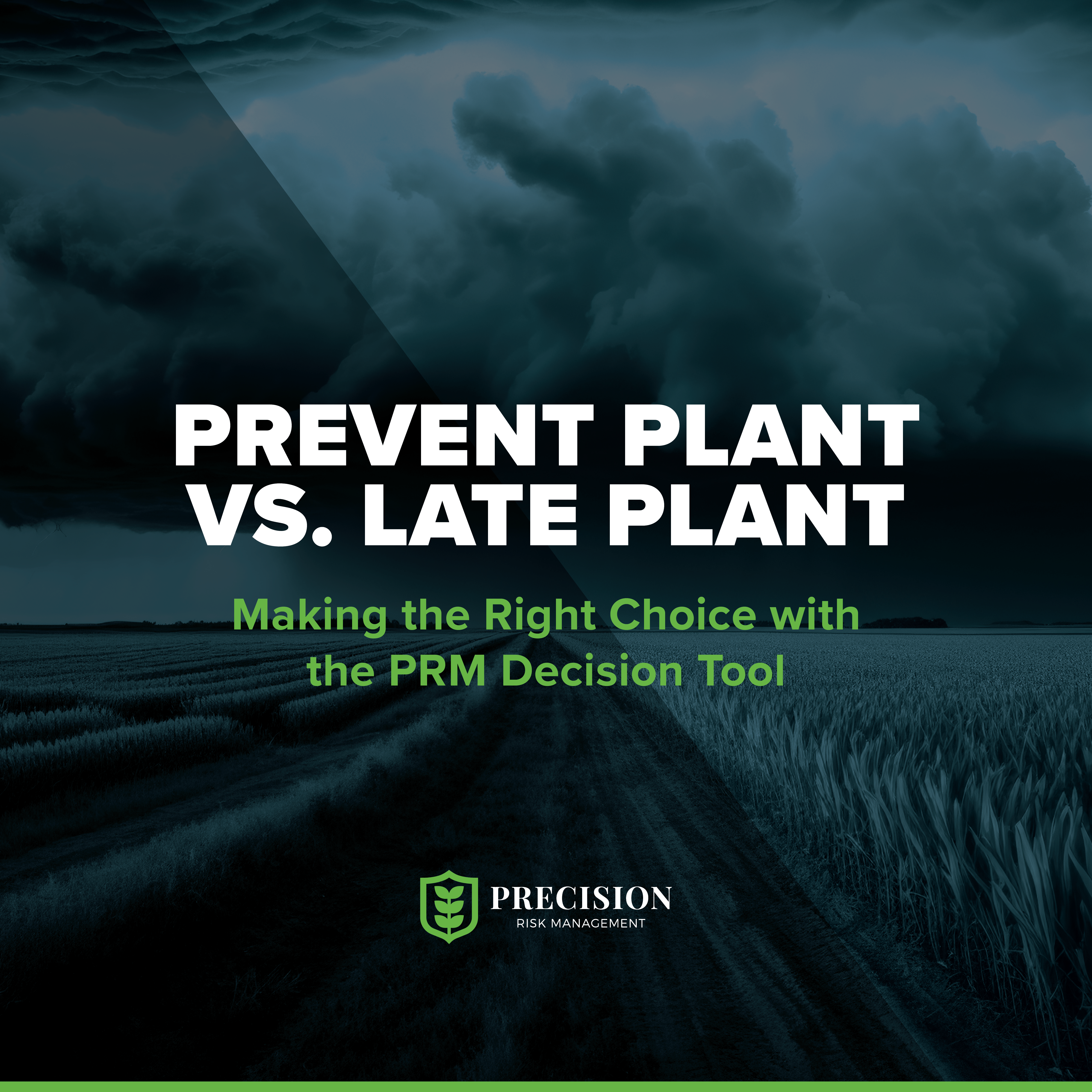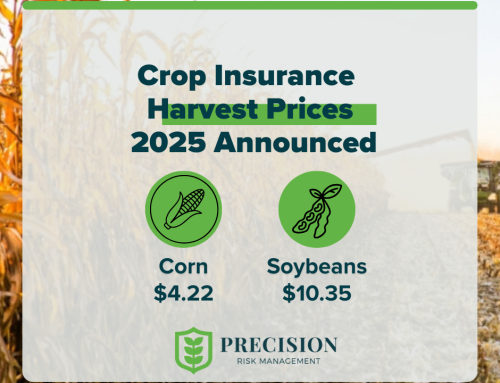Making the Right Choice with the PRM Decision Tool for Prevent Plant vs Late Plant
Recent weather conditions across the central part of the country have been challenging for farmers. High levels of severe weather and rain have prevented many from getting into their fields to plant. As planting deadlines approach and pass, producers are faced with a crucial decision: take a Prevent Plant (PP) payment or proceed with Late Planting (LP) and accept reduced guarantees on their crop insurance policies. This decision is not easy, but Precision Risk Management (PRM) offers a decision tool to help farmers understand their options.
What is Prevent Plant (PP) and Late Planting (LP)?
Prevent Plant (PP): This provides coverage and payment when adverse weather conditions, such as lots of rain, prevent farmers from planting. Farmers can receive a payment based on a percentage of their guaranteed coverage. For instance, PP typically covers 55% of the guarantee for corn and 60% for soybeans.
Late Planting (LP): This option allows farmers to plant crops after the Final Planting Date (FPD). However, coverage is reduced by 1% for each day planting is delayed. This reduction continues until the end of the Late Planting Period (LPP), after which coverage levels off at a lower rate.
The Math Behind PP and LP:
PP Payment Calculation:
Approved APH (Actual Production History) x Coverage Level x PP Percentage x Projected Price.
LP Coverage Calculation:
For each day of late planting, reduce the original coverage by 1%.
So, which option is better? It depends on your situation and APH. PRM has developed a decision tool to assist in evaluating which option is best for your risk management strategy. Let’s explore some examples.
Corn Example
Imagine a farmer with an Approved APH of 200 bushels per acre and a price of $4.66 per bushel. Starting with 75% coverage, the initial guarantee is $699.00 per acre. If the farmer chooses the PP payment, they receive 55% of this guarantee, resulting in a payment of $384.45 per acre, with a breakeven point at 82.5 bushels.
If the farmer decides to plant 5 days late, the coverage drops to 70%. This is a 1% loss of coverage for each day past the Final Plant Date(FPD). The guarantee reduces to 140 bushels per acre and a total guarantee of $652.40 per acre.

Soybean Example
For soybeans, assume an Approved APH of 55 bushels per acre and a price of $11.55 per bushel. With 75% coverage, the initial guarantee is $476.44 per acre. Choosing PP, the farmer gets 60% coverage, leading to a payment of $285.86 per acre and a breakeven point at 24.75 bushels.
Planting 5 days late reduces the coverage to 70%, lowering the guarantee to 38.5 bushels per acre and a total guarantee of $444.68 per acre.

Which scenario is better? It depends on your operation, weather conditions, and risk tolerance. Consulting with your Risk Management Advisor is essential. They can use PRM’s decision tool to calculate and discuss the best course of action. Contact them today.
Policy Reminders for Prevent Plant
Notification: Report prevented planting within 72 hours of the Final Planting Date or 72 hours after you cease trying to plant during the Late Planting Period.
Documentation: Maintain accurate records of planting attempts and weather conditions.
PP Claim Qualifications:
• Insurable cause must be common to the area.
• 20/20 Rule: Prevent Plant acres must be at least the lessor of 20 acres or 20% of the crop unit.
• 1 in 4 Rule: Eligible acres for each crop in each county is the highest number of harvested (if not harvested, was adjusted for claim purposes under the authority of the Act or NAP due to an insured cause of loss) and Prevent Plant acres indemnified over the last four years (Field Level). Once eligibility is exhausted it would roll to the closest paying crop; not to exceed original crop guarantee.
Policy Reminders for Late Planting
Reduction in Coverage: Remember that each day of delay reduces coverage by 1% which reduces your guarantees.
Final Planting Dates and Late Planting Dates: Be aware of the final planting dates for your area, crop, and farming practices
Yield Expectations: Adjust expectations for yield reductions due to late planting.
For more information and personalized advice, contact your PRM Risk Management Advisor today. They can provide detailed decision tool calculations to ensure the best outcome for your operation.






